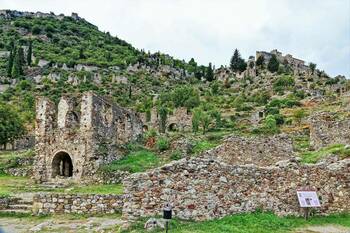From the MRSB: "Bigger House: Cost of Living and Medieval Byzantium," by Byzantine Fellow Mark Pawlowski

Cost of living is a pressing issue faced by many people today. Inflation, gas prices, and housing costs all impact our quality of life. Recently these pressures have encouraged many people to move to areas where they hope to find better conditions. Large cities offer many conveniences. However, one’s home will not only be quite expensive, but also quite small. For the cost of a one bedroom condo in San Francisco, one could purchase a large house with a yard here in South Bend. Where one lives has a significant effect on the home they can have. This relationship between house size and location is not unique to today.
Those living in medieval Byzantium could not consult home listings from across the Empire. Nor was the freedom of movement that we have today in existence in the Middle Ages. However, there still existed significant variation in the size of village houses across regions. Villagers may not have simply been able to decide to move to an area that would provide their family with a larger house or greater resources, but clear differences in housing are preserved in the archaeological record.
Looking at the villages of the Byzantine Empire provides us with a fascinating glimpse of how location affected the houses of everyday people. Movement by villagers was restricted within Byzantium, but it did occur regularly. Most often this movement was spurred by necessity and not personal choice. After all, there was no simple way to compare houses from Anatolia and the Peloponnese. Further, the greatest impact on village houses was not the amount of money one could pay for them. The materials used to construct the house and local topography were the most significant factors. Most frequently, village houses were built by those who lived within them. [...]
This is an excerpt from the Medieval Studies Research Blog. Read Dr. Pawlowski's full blog post, and join us on December 2, 2022, for his Byzantine Postdoctoral Workshop.